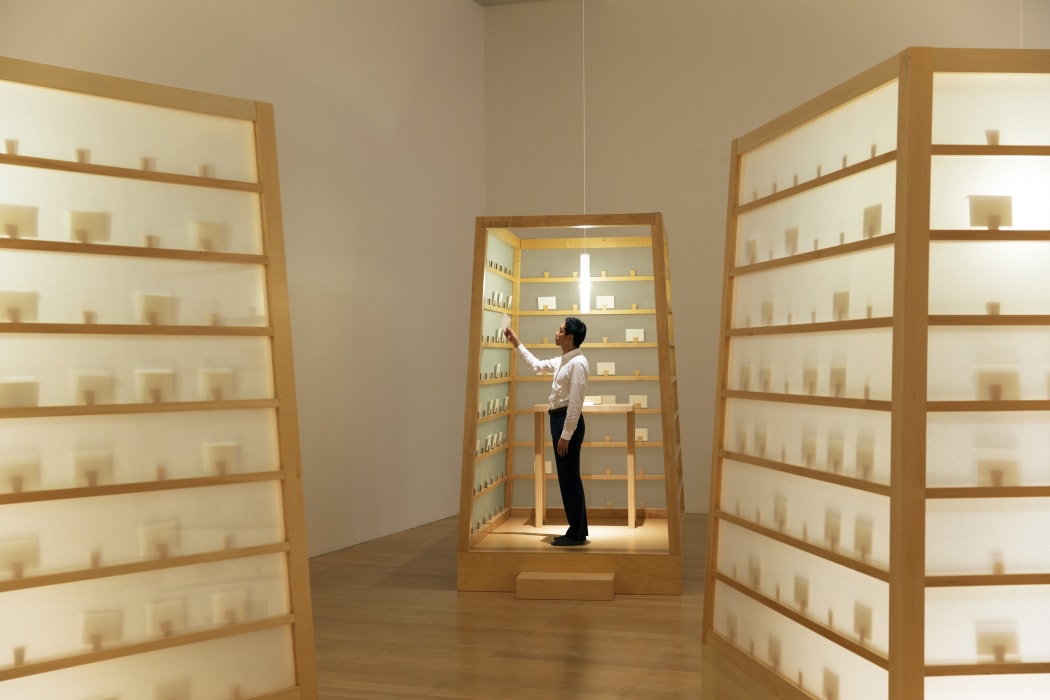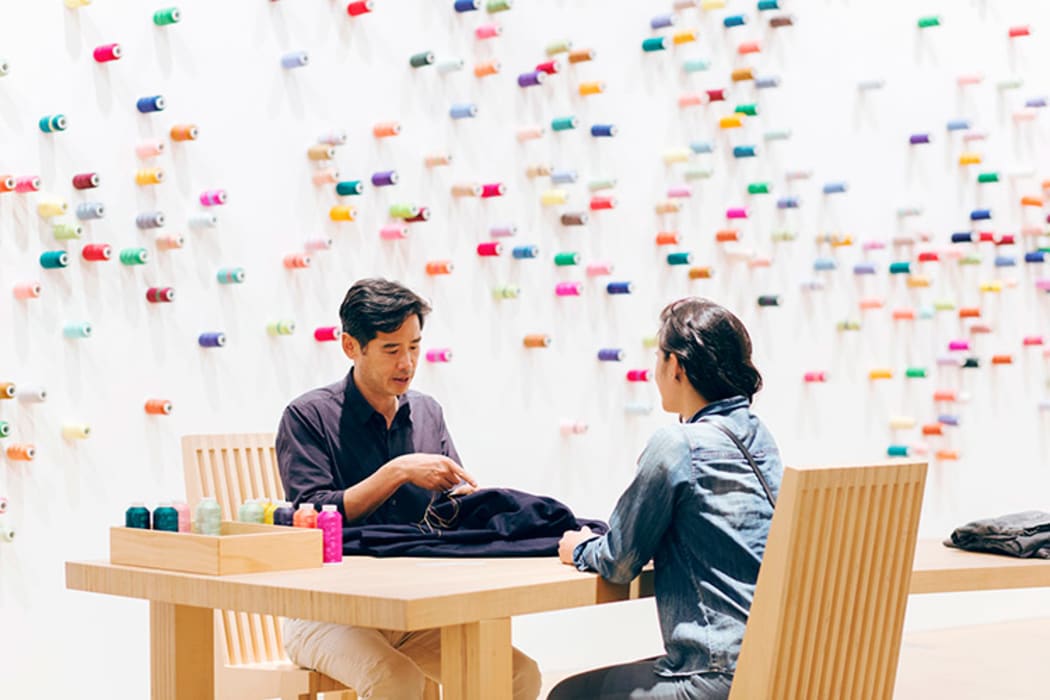
Lee Mingwei, The Letter Writing Project 1998-2014 Photo: Supplied
Contemporary Taiwanese artist Lee Mingwei hopes gallery-goers won't shy away from getting involved in his exhibition with The Art of Participation at Auckland Art Gallery.
The exhibition will feature three of his projects: The Letter Writing Project, The Sleeping Project and Sonic Blossom.
From mending something that’s broken, and writing letters that they always wanted to but never had the time, to sleeping - yes sleeping at an art gallery - there’s something different for those wanting to participate in art.
He hopes people will leave the gallery with more questions than answers.
“For me, I do think in my role as an artist is to provide a stage and platform for questioning in a safe place to question these things we think we know already, which is what is art and what art could be.”
He says those questions are the spirit of contemporary art, especially the type of participatory projects that he creates.
It is hard to believe that given his success as one of the world’s most well-known contemporary artists, Mingwei never set out to be an artist.
“Art came to me because I did not go out to look for it. I was studying architecture, biology and textile. I loved all of these subjects, but I just couldn’t see myself having them as a profession, so I wanted to be in a place that had no right or wrong, and also in a place that celebrates difference and originality. That’s why I landed in being an artist.”
Now his art shows in the biggest contemporary art museums internationally. The Art of Participation was originally curated for Tokyo’s Mori Art Museum and comes to Auckland from the Taipei Fine Arts Museum.
Sonic Blossom is perhaps the most personal of the three projects that will be on display in Auckland, it is inspired by the music of his childhood and his relationship with his mother.
As a rambunctious child his mother, who loved classical music, would play Franz Schubert at a very soft volume to get him to sit down and be quiet.
“Lieder and the mixing of cicada, frog, cricket and hot summer nights in Taiwan bring back such beautiful memories of my time spent with my mother,” he explains.
A few years ago when she was ill with heart disease, he went back to Taiwan and played Schubert for her.
“That’s where the idea of using Schubert’s Lieder as a gift between strangers [comes from], so notice that this time it is not between people we know, but between strangers.”
In the exhibition, a singer will approach one of the gallery visitors to ask if they would like the gift of song.
“The interesting thing is that not everyone goes to a contemporary art gallery or a museum, and once they are not everybody will participate in a participatory project, so with those two self-selected processes, a person who decides to participate in any of these projects, I am almost guaranteed that this person is either very curious or very much into participation, so the experience is going to be great.”
Mingwei hopes to bring tension in his work by encouraging interactions between strangers.
“It is very important for me because I believe all my project needs to have that sense of tension in order to bring out the beauty of the work. Imagining if there is no tension to the work, the project might just be a beautiful project but in a saccharine way, which I find it uncomfortable, so an encounter of a stranger often brings a different kind of expectation.
"For example most people say, ‘Yes I would love to have this as a gift,’ but surprisingly, sometimes when the singer goes up to a stranger in the gallery and says ‘May I give you a gift song?’, sometimes the person will say ‘No, I don’t want it,’ or ‘How much is it?’ or ‘How much time is it going to take?’, so there is this discomfort there.”

Lee Mingwei's The Mending Project, which will also be on display at the Auckland Art Gallery. Photo: Yoshitsugu Fuminari, courtesy Mori Art Museum, Tokyo
The participatory nature of his work means that each experience with the artwork is unique and very much dependent on the participator. He expects the exhibition at Auckland Art Gallery to be no different and plans to return to the exhibition to see how the community owns the projects, he says.
“I am very certain at the Auckland Art Gallery they are going to have these stories of each encounter that belongs to Auckland Art Gallery and the community.”
A common theme he returns to is daily rituals and he aims to bring a new meaning to the mundane by presenting them in a gallery setting.
“It’s about daily activity and these daily activities such as dining or sleeping or letter writing or even singing, are a very sacred ritual to ourselves, however we didn’t have to go to school or an institution to learn how to do this. We learn from our family and from our friends and parents.
“So there is an idea of these things being passed from generation to generation, so when I bring out these rituals in a museum setting, hopefully it could shed a different light to these activities that we are familiar with already.”
Lee Mingwei and His Relations: The Art of Participation opens at the Auckland Art Gallery on Saturday 5th November.

